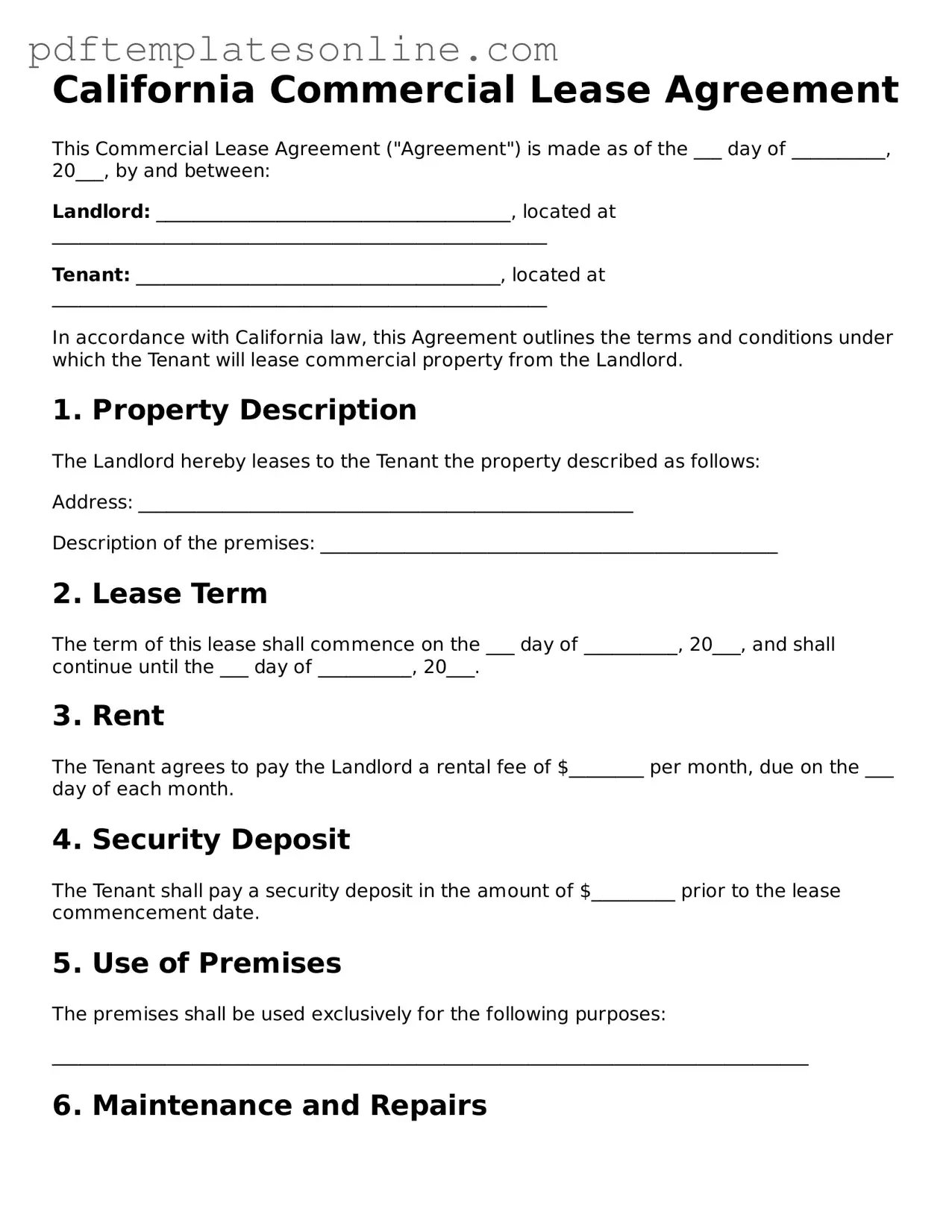Official California Commercial Lease Agreement Document
A California Commercial Lease Agreement is a legally binding document that outlines the terms and conditions under which a landlord leases commercial property to a tenant. This agreement typically covers critical aspects such as rent, duration of the lease, and responsibilities of both parties. Understanding this form is essential for ensuring a smooth rental experience and protecting the interests of both landlords and tenants.
Access Commercial Lease Agreement Editor Now
